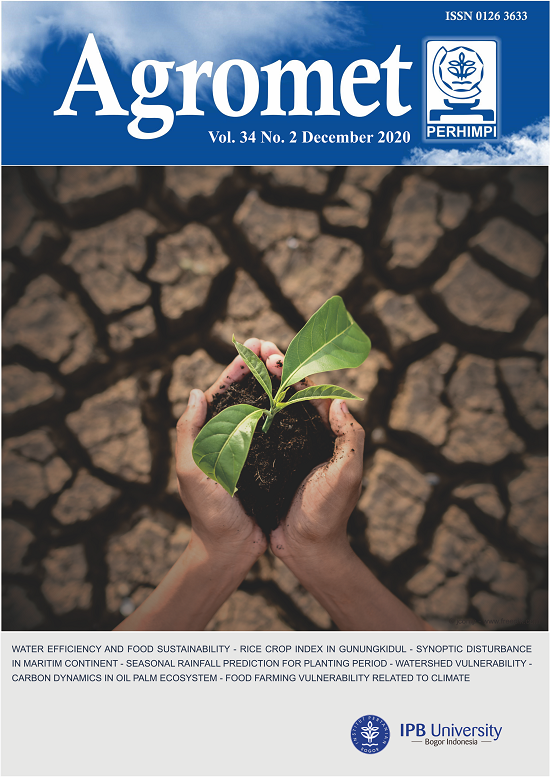Influence of Land Use and Rainfall on Carbon Stock Dynamics for Oil Palm and Rubber
Abstract
The expansion of agricultural commodities including oil palm plantations potentially causes an increase of greenhouse gas emissions by amplifying carbon dioxide (CO2) in the atmosphere. In the long term, this amplification will alter climate change. However, oil palm also has the potency to reduce greenhouse gas emissions by absorbing CO2 through photosynthesis. This study aims to determine the carbon stock that can be absorbed by oil palm and rubber plants, and to determine the relationship of rainfall with carbon stock in oil palm plants. The study used satellite image data based on Landsat and combined with rainfall data from near Perbaungan District, North Sumatra. Three Landsat data (acquisition date: (i) 12 February 2000, (ii) 8 March 2009, and (iii) 11 August 2019) were processed to estimate carbon stock. The procedure for estimating carbon stock was as follows: determining the sample and digitizing the sampling points, converting the digital value of the numbers into the spectral spectrum, calculating the albedo values, calculating the long-wave and short-wave radiations, computing biomass, and the absorbed carbon stock. The results showed that the carbon stock in oil palm was greater than that of rubber plants as oil palm has a greater biomass. The greater the plant biomass, the bigger the carbon stock absorbed. Further, the findings revealed that rainfall in dry season has a contribution to carbon stock in oil palm and rubber. The higher the total rainfall during dry season will increase the absorbed carbon stocks.
Authors

This work is licensed under a Creative Commons Attribution-NonCommercial 4.0 International License.

